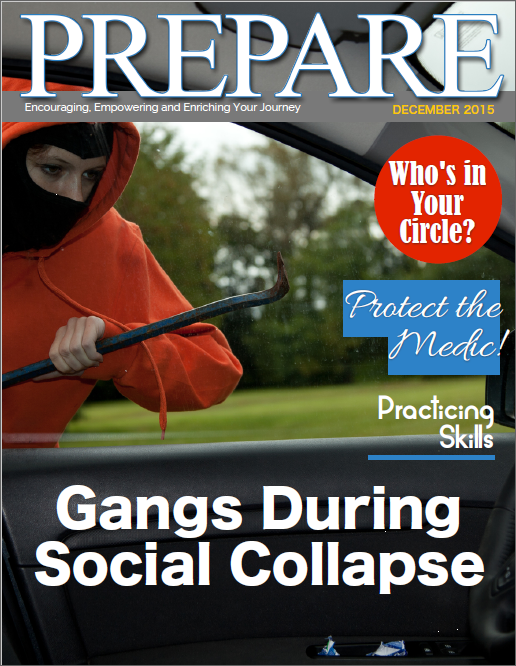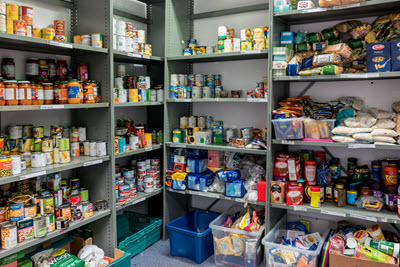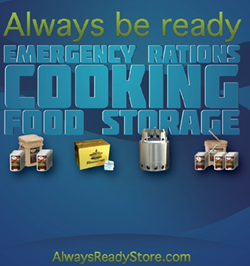When disaster strikes, it is often too late to think about how to respond effectively. That is why preparing for disasters is crucial. By taking the necessary steps beforehand, you can minimize the impact of a disaster and ensure the safety and security of yourself, your loved ones, and your community.
In this introductory article, we will explore the importance of preparing for disasters and delve into various related topics that will equip you with the knowledge and skills needed to face any emergency situation. From natural disasters like hurricanes, earthquakes, and floods, to man-made crises such as fires, terrorist attacks, and pandemics, being prepared is the key to survival.
By adopting a proactive approach to disaster preparedness, you can significantly reduce the risks associated with these events. This involves creating an emergency plan, assembling a disaster supply kit, and staying informed about potential hazards in your area. Additionally, understanding evacuation routes, communication strategies, and first aid techniques can make all the difference when faced with a crisis.
In the following sections, we will delve deeper into each of these topics, providing you with practical advice and expert tips on how to prepare for different types of disasters. We will also explore the importance of community resilience and the role that individuals can play in supporting one another during times of crisis.
Remember, disaster preparedness is an ongoing process. It requires regular review and updates to ensure that you are equipped with the most current information and resources. So, join us as we embark on this journey of preparedness, where we will empower you to face any disaster head-on and emerge stronger and more resilient.
Stay tuned for our next installment, where we will delve into the first topic: creating an emergency plan. Together, we can build a safer and more secure future.
Why is it important to prepare for disasters?
 Disasters can strike at any time, without warning. Whether it’s a natural disaster like a hurricane or earthquake, or a man-made disaster such as a terrorist attack or pandemic, being prepared is crucial. In fact, preparing for disasters can mean the difference between life and death.
Disasters can strike at any time, without warning. Whether it’s a natural disaster like a hurricane or earthquake, or a man-made disaster such as a terrorist attack or pandemic, being prepared is crucial. In fact, preparing for disasters can mean the difference between life and death.
One of the main reasons why it is important to prepare for disasters is to ensure the safety and well-being of yourself and your loved ones. By having a plan in place and being prepared, you can minimize the risks and potential harm that disasters can cause. This includes having emergency supplies, such as food, water, and medication, readily available, as well as knowing what to do and where to go in case of an emergency.
Another reason to prepare for disasters is to protect your property and belongings. By taking preventive measures, such as securing your home and belongings, you can reduce the risk of damage or loss during a disaster. This can include installing storm shutters, reinforcing doors and windows, and securing important documents and valuables in a safe place.
Furthermore, being prepared for disasters can also help in the recovery process. By having a plan in place, you can quickly assess the situation and take necessary actions to start the recovery process. This can include contacting emergency services, insurance companies, and other relevant authorities to get the help and support needed.
In conclusion, preparing for disasters is of utmost importance. It ensures the safety and well-being of yourself and your loved ones, protects your property and belongings, and helps in the recovery process. By being proactive and taking the necessary steps to prepare, you can minimize the impact of disasters and increase your chances of survival. Don’t wait until it’s too late – start preparing today.
What are some common natural disasters?
Natural disasters can strike at any time, leaving devastation in their wake. Being prepared is crucial, as it can save lives and minimize damage. In this article, we will explore some of the most common natural disasters and the importance of preparing for them.
One of the most well-known natural disasters is earthquakes. These occur when the Earth’s tectonic plates shift, causing the ground to shake violently. Earthquakes can result in collapsed buildings, landslides, and tsunamis, making preparedness essential.
Another common natural disaster is hurricanes. These powerful storms form over warm ocean waters and can cause widespread destruction. High winds, heavy rainfall, and storm surges can lead to flooding, power outages, and significant property damage. Having a plan in place and stocking up on essential supplies is crucial when facing a hurricane.
Floods are also a frequent occurrence in many parts of the world. Heavy rainfall, melting snow, or dam failures can lead to overflowing rivers and flash floods. Being aware of flood-prone areas and having an evacuation plan can help ensure the safety of individuals and their belongings.
Wildfires are another natural disaster that can have devastating consequences. Dry conditions, strong winds, and human activities can lead to the rapid spread of fires. Preparing for wildfires involves creating defensible space around homes, having emergency kits ready, and being aware of evacuation routes.
Tornadoes, volcanic eruptions, and tsunamis are other natural disasters that can wreak havoc on communities. Each requires specific preparedness measures to ensure the safety and well-being of those affected.
In conclusion, being aware of the common natural disasters in your area and taking steps to prepare is crucial. By having a plan, stocking up on supplies, and staying informed, you can increase your chances of surviving and recovering from these catastrophic events. Remember, it’s never too early to start preparing for disasters. Stay safe!
How can I create an emergency preparedness plan?
 When it comes to preparing for disasters, having an emergency preparedness plan in place is crucial. Whether you live in an area prone to natural disasters or not, it’s always better to be safe than sorry. So, how can you create an effective emergency preparedness plan? Let’s dive in.
When it comes to preparing for disasters, having an emergency preparedness plan in place is crucial. Whether you live in an area prone to natural disasters or not, it’s always better to be safe than sorry. So, how can you create an effective emergency preparedness plan? Let’s dive in.
First and foremost, you need to assess the potential risks in your area. Are you prone to hurricanes, earthquakes, or floods? Understanding the specific hazards you may face will help you tailor your plan accordingly. By doing this, you can focus on the necessary steps to mitigate the risks.
Next, gather essential supplies. Stock up on non-perishable food, water, and medication to last you and your family for at least a few days. Don’t forget to include a first aid kit, flashlights, batteries, and a battery-powered radio. These items are crucial in case of power outages or communication disruptions.
Communication is key during emergencies. Make sure you have a designated meeting spot for your family members in case you get separated. Additionally, have a list of emergency contacts, including local authorities, nearby hospitals, and family members who live outside the affected area. This way, you can stay connected and informed.
Creating an evacuation plan is also vital. Identify the safest routes and shelters in your area. Plan multiple evacuation routes in case one becomes inaccessible. Practice these routes with your family members, so everyone knows what to do and where to go in case of an emergency.
Lastly, don’t forget about your pets. Include them in your emergency preparedness plan by having extra food, water, and necessary supplies for them. Research pet-friendly shelters or hotels in case you need to evacuate with your furry friends.
By following these steps, you can create a comprehensive emergency preparedness plan that will help you and your loved ones stay safe during disasters. Remember, preparation is key when it comes to facing unexpected situations. Stay informed, stay prepared, and stay safe.
What should I include in a disaster supply kit?
When it comes to preparing for disasters, having a well-stocked disaster supply kit is essential. Whether you’re facing a natural disaster like a hurricane or an unexpected emergency, having the right supplies can make all the difference. So, what should you include in your disaster supply kit?
First and foremost, water is crucial. Plan on having at least one gallon of water per person per day for at least three days. This will ensure that you have enough water for drinking, cooking, and hygiene purposes. Non-perishable food items are also important to include. Canned goods, granola bars, and dried fruits are great options that have a long shelf life.
In addition to food and water, it’s important to have a supply of essential medications. If you or your family members rely on prescription medications, make sure to have a sufficient amount on hand. Don’t forget about over-the-counter medications like pain relievers, antacids, and allergy medicine.
Other items to include in your disaster supply kit are a flashlight with extra batteries, a first aid kit, a whistle to signal for help, and a manual can opener. It’s also a good idea to have a battery-powered or hand-crank radio to stay updated on the latest news and emergency instructions.
Lastly, don’t forget about personal hygiene items. Include items like toilet paper, hand sanitizer, wet wipes, and feminine hygiene products. It’s also a good idea to have extra clothing and blankets in case of cold weather.
Remember, disasters can happen at any time, so it’s important to be prepared. By having a well-stocked disaster supply kit, you’ll have peace of mind knowing that you have the essentials to weather any storm. Stay safe and be prepared!
How can I protect my home from disasters?
When it comes to protecting your home from disasters, preparation is key. By taking the necessary steps, you can minimize the potential damage and ensure the safety of your loved ones. Here are some important measures you can take to safeguard your home:
1. Create an emergency plan: Develop a detailed plan that outlines what to do in different disaster scenarios. Make sure all family members are aware of the plan and know how to execute it efficiently.
2. Secure important documents: Keep important documents such as insurance policies, identification papers, and medical records in a waterproof and fireproof safe. Consider making digital copies and storing them securely online as well.
3. Install smoke detectors and fire extinguishers: These are essential for early detection and prevention of fires. Place smoke detectors in every room and check them regularly to ensure they are in working condition. Keep fire extinguishers in easily accessible areas, such as the kitchen and garage.
4. Reinforce your home: Strengthen your home’s structure to withstand natural disasters. Install storm shutters, reinforce windows and doors, and secure heavy furniture to prevent them from toppling over during earthquakes or strong winds.
5. Maintain your property: Regularly inspect and maintain your home. Clear gutters and drains to prevent water buildup, trim trees and branches to reduce the risk of falling during storms, and repair any structural damage promptly.
6. Create a disaster supply kit: Stock up on essential supplies such as food, water, first aid kits, flashlights, and batteries. Keep the kit easily accessible and ensure it is regularly updated.
Remember, disasters can strike at any time, so it’s crucial to be prepared. By implementing these measures, you can protect your home and increase your chances of staying safe during emergencies. Stay vigilant and stay prepared!
What are some ways to stay informed during a disaster?
When a disaster strikes, staying informed is crucial for your safety and well-being. In today’s digital age, there are several ways to ensure you have access to the latest information and updates. By utilizing these methods, you can stay informed and make informed decisions during a crisis.
One of the most effective ways to stay informed during a disaster is by monitoring local news sources. Local news outlets often provide up-to-date information on the situation, including evacuation orders, road closures, and emergency contact numbers. By staying tuned to these sources, you can stay informed about the latest developments in your area.
In addition to local news, it is also important to utilize technology to stay informed. Many emergency management agencies have developed mobile apps that provide real-time updates during disasters. These apps often include features such as emergency alerts, evacuation routes, and shelter locations. By downloading and using these apps, you can have vital information at your fingertips, even when you’re on the go.
Social media platforms can also be valuable sources of information during a disaster. Many organizations and government agencies use social media to provide updates and share important information. By following these accounts, you can receive timely updates and stay connected with the community.
Another way to stay informed is by signing up for emergency alerts. Many regions have systems in place that send out alerts via text message or email during emergencies. By registering for these alerts, you can receive important information directly to your phone or inbox.
In conclusion, staying informed during a disaster is crucial for your safety. By utilizing local news sources, technology, social media, and emergency alerts, you can ensure that you have access to the latest information and updates. Remember, being informed is the first step towards being prepared.
How can I help others during a disaster?
When disaster strikes, it is important to come together as a community and support one another. There are several ways you can help others during a disaster, whether it’s a natural calamity or a man-made crisis. By being prepared and taking proactive steps, you can make a significant difference in the lives of those affected.
One of the most crucial ways to help others during a disaster is by volunteering your time and skills. Organizations such as the Red Cross and local disaster relief agencies are always in need of volunteers to assist with various tasks. Whether it’s providing first aid, distributing supplies, or offering emotional support, your contribution can be invaluable.
Another way to help is by donating to reputable disaster relief organizations. Financial contributions can make a significant impact in providing immediate relief to those affected. Look for organizations that have a proven track record in disaster response and ensure that your donation will be used efficiently and effectively.
Additionally, spreading awareness and educating others about disaster preparedness can also be a great help. Encourage your friends, family, and community to create emergency kits, develop evacuation plans, and stay informed about potential hazards. By sharing knowledge and resources, you can empower others to be better prepared for future disasters.
Finally, offering a helping hand to your neighbors and community members can go a long way. Check on your elderly or vulnerable neighbors, offer assistance with cleanup and recovery efforts, and provide support to those who may be struggling emotionally in the aftermath of a disaster. Small acts of kindness can make a big difference in times of crisis.
In conclusion, there are various ways you can help others during a disaster. By volunteering, donating, spreading awareness, and offering support, you can play a vital role in assisting those affected by disasters. Together, we can build resilient communities that are better prepared to face any future challenges.
What should I do after a disaster occurs?
In the aftermath of a disaster, it’s crucial to stay calm and take immediate action to ensure your safety and well-being. While each disaster may require a different approach, there are some general steps you can follow to navigate through this challenging time.
First and foremost, prioritize your safety and the safety of those around you. Check for any injuries and provide first aid if necessary. If you’re in a damaged building, evacuate to a safer location and avoid entering any unstable structures.
Next, assess the damage and contact the relevant authorities. Report any injuries, missing persons, or hazardous situations to the emergency services. They are trained to handle these situations and can provide the necessary assistance.
It’s important to gather essential supplies, such as food, water, and medical supplies. If possible, listen to emergency broadcasts for updates and instructions from local authorities. They will provide information on evacuation routes, emergency shelters, and other resources available to you.
Document the damage by taking photographs or videos, as this can be helpful for insurance claims and disaster relief applications. Keep all receipts for expenses related to the disaster, as you may be eligible for financial assistance.
Reach out to your loved ones to let them know you’re safe. Use text messages or social media platforms, as they may be more reliable than phone calls during this time. Stay connected with your community and offer support to those in need.
Remember to take care of your mental and emotional well-being. Disasters can be traumatic, and it’s important to seek support from friends, family, or professionals if needed.
While the immediate aftermath of a disaster can be overwhelming, staying informed, organized, and connected will help you navigate through this challenging time. By taking these steps, you can begin the process of recovery and rebuilding.
In conclusion, preparing for disasters is of utmost importance in order to ensure the safety and well-being of ourselves and our loved ones. Throughout this post, we have discussed various topics related to disaster preparedness, including the importance of being prepared, common natural disasters, creating an emergency preparedness plan, building a disaster supply kit, protecting our homes, staying informed during a disaster, helping others, and what to do after a disaster occurs.
We have learned that being prepared for disasters can mean the difference between life and death. By having a plan in place and knowing what to do in various scenarios, we can minimize the impact of a disaster on our lives. We have also explored the different types of natural disasters that can occur, such as hurricanes, earthquakes, floods, and wildfires, and the specific steps we can take to prepare for each of them.
Creating an emergency preparedness plan is crucial, as it allows us to have a clear understanding of what needs to be done in case of an emergency. This includes identifying evacuation routes, establishing communication plans with family members, and knowing the location of emergency shelters. Additionally, building a disaster supply kit is essential, as it ensures that we have the necessary food, water, medications, and other essential items to sustain ourselves during and after a disaster.
Protecting our homes from disasters involves taking preventive measures such as reinforcing structures, securing loose objects, and having proper insurance coverage. Staying informed during a disaster is vital, and we have discussed various ways to do so, including listening to emergency alerts, monitoring weather updates, and utilizing mobile apps and social media platforms.
Helping others during a disaster is a compassionate act that can make a significant difference in someone’s life. By volunteering, donating supplies, or offering support to affected individuals and communities, we can contribute to the recovery process. Finally, we have explored the necessary steps to take after a disaster occurs, including assessing the damage, contacting insurance providers, and seeking assistance from local authorities and relief organizations.
Looking ahead, it is important to stay updated on new developments and trends in disaster preparedness. With the increasing frequency and intensity of natural disasters, it is crucial to adapt and improve our preparedness efforts. We must also consider the potential impact of climate change on the frequency and severity of disasters.
Thank you for taking the time to read this post. We hope that the information provided has been helpful in understanding the importance of preparing for disasters. We encourage you to leave any comments or feedback and to share your own experiences and tips on disaster preparedness. Together, we can create safer and more resilient communities.







